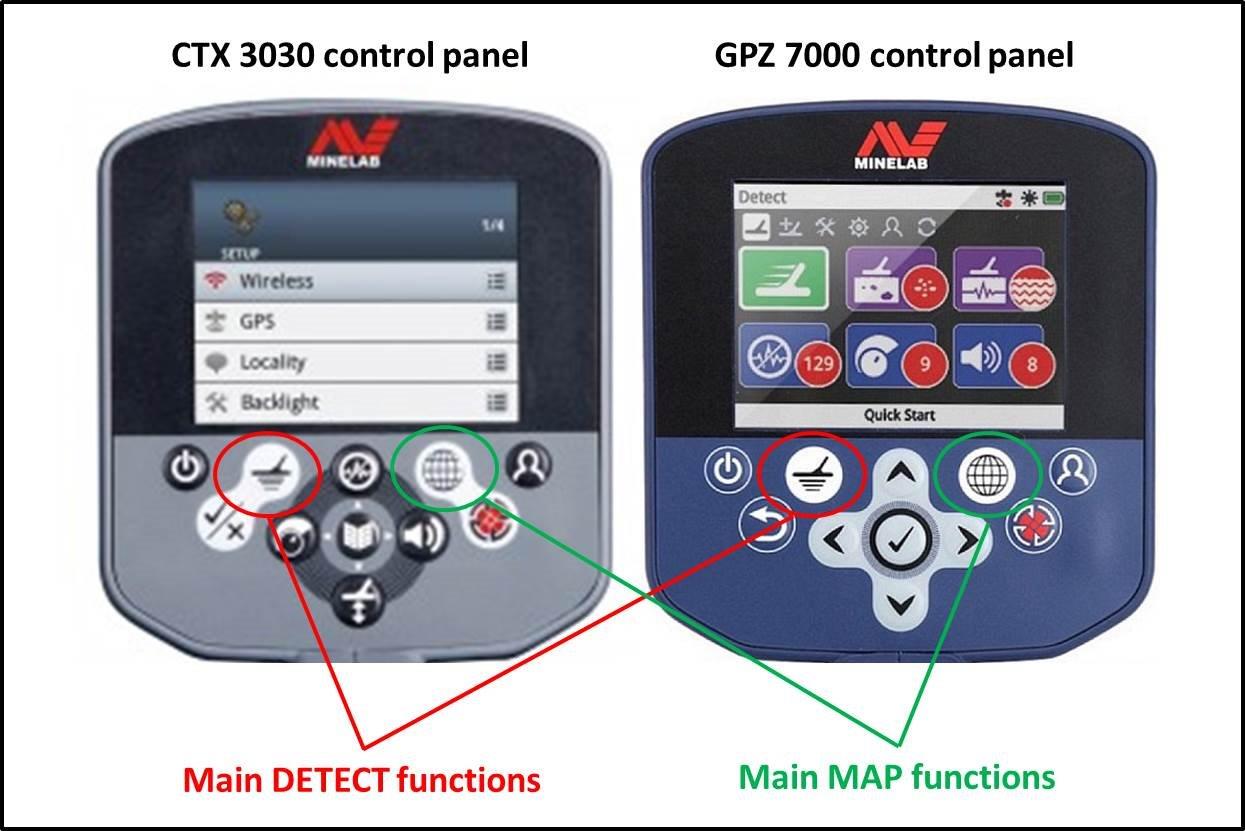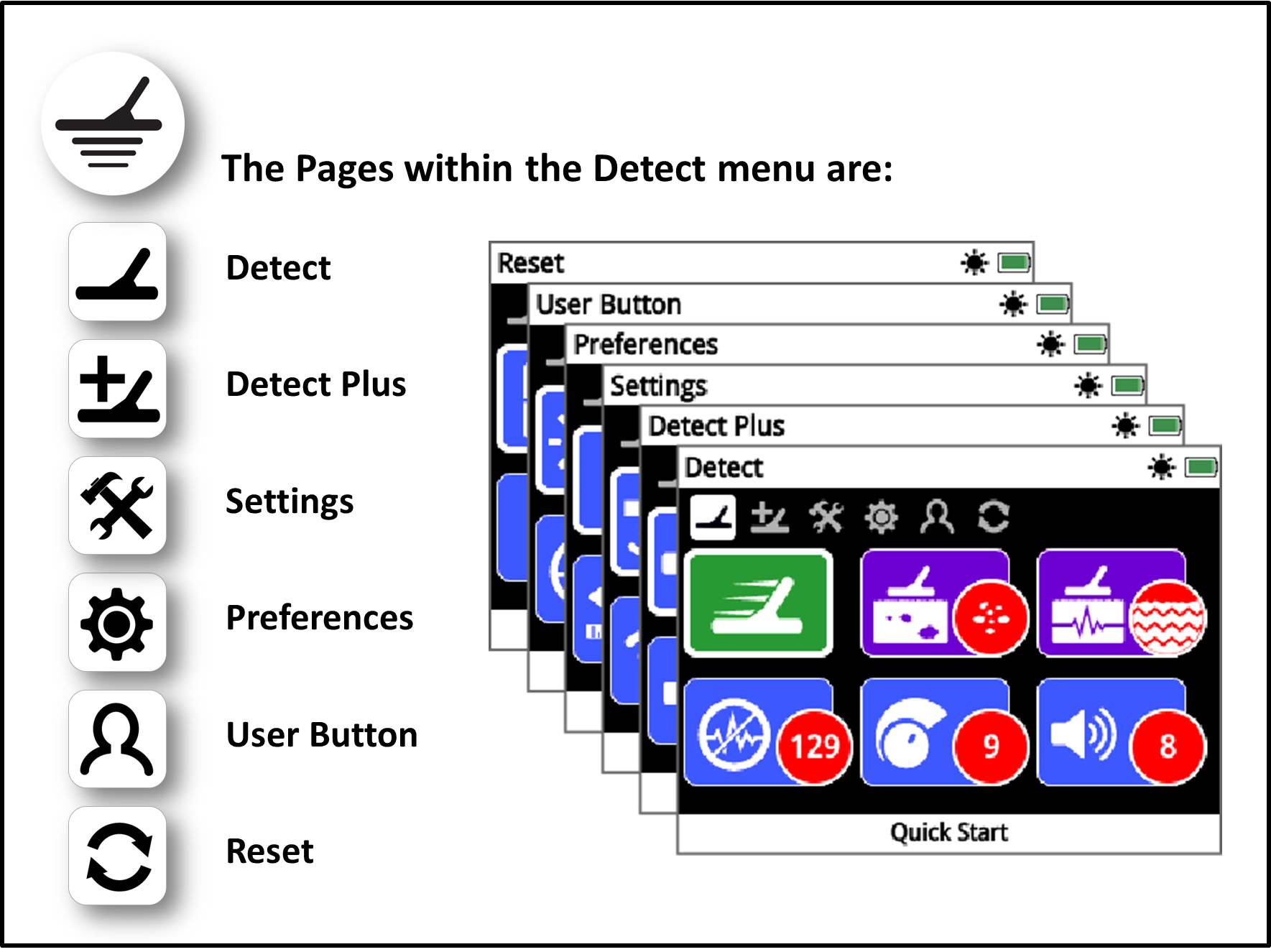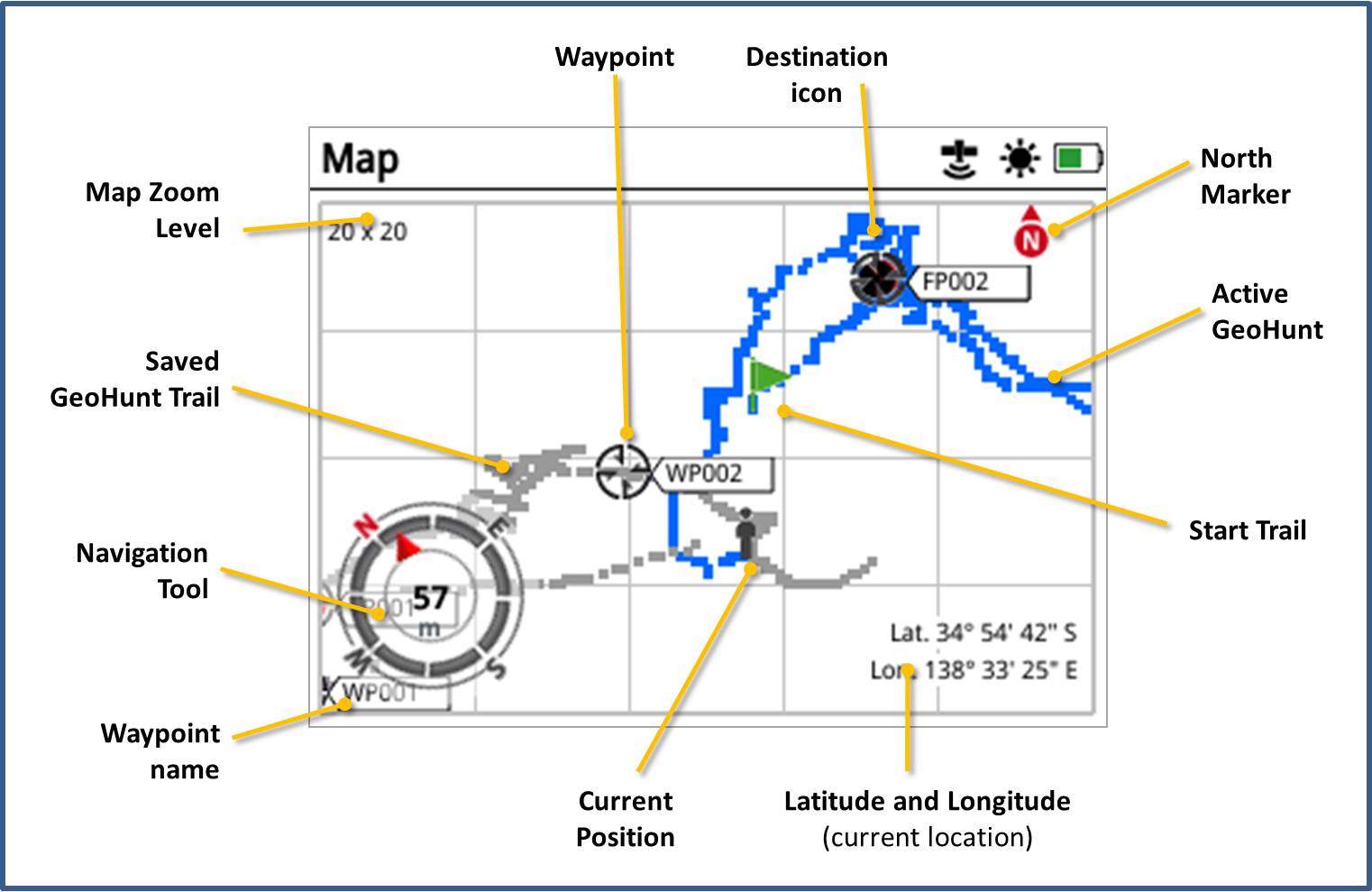The GPZ 7000 comes with a menu and control system which is something very new for Minelab’s gold oriented metal detectors. In looking at it initially, it is clearly a close relative of the system used on the CTX 3030 – Minelab’s flagship treasure hunting detector. Some prospectors who do quite a bit of treasure hunting will already be thoroughly familiar with the menu system of the CTX 3030, but for me, although I do my share of coin, jewelry and treasure hunting, my passion is really in the area of gold prospecting so previously I had only spent a short time examining the menu system of the CTX. However, from the first time I saw the CTX 3030, I admired it’s easy to operate menu and display system. I have to say that I have long wished for an easily viewed menu screen system while running my GPX 5000. The new handle mounted menu controls on the GPZ 7000 makes this all possible and it is just as easy to use as I had hoped for.

One of the things about the GPX series of metal detectors is that they have many, many possible settings in order to give the user as much flexibility as possible in choosing settings which will maximize the performance of the detector in a wide variety of environments. It is not uncommon that one would want to switch back and forth between different settings and compare their performance on an individual target or as a prospector moves across various ground types and notices a change in the geology of the soil beneath him. The brilliant thing of the GPZ 7000 menu and control system is that it is now extremely easy to switch back and forth and compare the performance of the different settings, and this will certainly prove a great asset.
The setting choices for the GPZ 7000 are arranged into pages, and the pages are well organized, with the most common settings one might want to be adjusting on the first page with easy access. These include Quick Start (to get going easily), Gold Mode settings (High Yield, General, Extra Deep), Ground Type (Normal, Difficult and Severe), EMI Noise Cancel, Sensitivity and Volume being on the first Detect page of settings. The pages further back have settings which are not normally adjusted as frequently, but they are still easily checked or altered. One of the things about the GPX series of metal detectors is that they have many, many possible settings in order to give the user as much flexibility as possible in choosing settings which will maximize the performance of the detector in a wide variety of environments. It is not uncommon that one would want to switch back and forth between different settings and compare their performance on an individual target or as a prospector moves across various ground types and notices a change in the geology of the soil beneath him. The brilliant thing of the GPZ 7000 menu and control system is that it is now extremely easy to switch back and forth and compare the performance of the different settings, and this will certainly prove a great asset.
The setting choices for the GPZ 7000 are arranged into pages, and the pages are well organized, with the most common settings one might want to be adjusting on the first page with easy access. These include Quick Start (to get going easily), Gold Mode settings (High Yield, General, Extra Deep), Ground Type (Normal, Difficult and Severe), EMI Noise Cancel, Sensitivity and Volume being on the first Detect page of settings. The pages further back have settings which are not normally adjusted as frequently, but they are still easily checked or altered.

I will say that I find that seeing the user interface screen in bright sunlight can be a little difficult to see at times, so I have gone to running with the backlight turned on even during the daytime. This improves the contrast of the display, and allows me to work the menu screen with no problem at all. I find a high level of back light is not necessary to increase the contrast, merely a low level.
The buttons on the user interface panel are very intuitive and this makes navigation of the different settings easy to learn and remember, so there is no doubt that I will be doing a lot more comparison of the different settings because of the ease of switching between them. By testing the performance in different settings, I will easily be able to be sure that I am using the best set of settings possible on the ground which I am working. The display also works great with the built in GPS. In the past, if one found a nugget patch and wanted to cover it thoroughly, chaining was the best option, but chaining leaves notable scars behind to tell other prospectors the location of your patch, and it is tough to do when covering steeper slopes. With the new easily viewed display and the built in GPS, one can keep an accurate track of one’s progress in covering the ground and see at a glance on the display where one has been – all this while leaving no chain marks.

The power of the new GPZ 7000 is very easy to handle and employ based on the new, simplified menu system with makes prospecting with this detector a real pleasure. I had great success while testing the GPZ, and I am looking forward to getting out and really pulling up some serious gold with mine in the very near future.




















Comments
To make comments you must be logged in, please note comments will not display immediately due to moderation